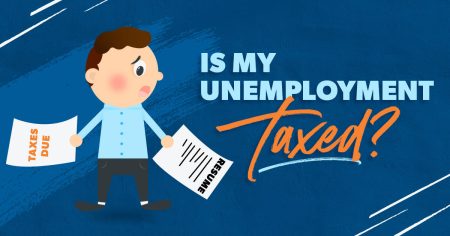Obtaining a small business loan can be overwhelming, but with proper preparation and these eight simple steps, you’ll be one step closer to getting the capital you need to achieve your business goals and grow.
How to apply for and get a business loan
1. Understand your small business’s needs.
How you plan to use your loan and the loan amount you need will often dictate which type of loan you qualify for. Different loan types will also have different payback periods, ranging from months to years. Doing your research and identifying the best business loan for your situation will improve your chances of qualifying for a loan.
How will you use the funding?
Common use cases for a business loan include:
- Purchasing equipment
- Working capital
- Purchasing property
- Refinancing a current loan
- Business expansion
- Cover payroll
- Purchase a business/franchise
- Buy out a partner
See if your business is eligible for financing.
How much money are you looking for?
How much money do you need?
It’s important to borrow an amount that helps you achieve your goals while not stretching your business too thin with repayment. The amount of money available will vary based on the lender and loan type, so have this number honed down before going further into the research process.
How long do you need the loan?
Unlike a home mortgage, business financing comes with multiple term length options. A business line of credit, for example, provides a pool of funds you can draw on and then pay back in daily, weekly, or monthly periods depending on the financing agreement. A term loan period can span from six months to 10 years while an SBA 504 loan can be paid back over 20 years.
2. Look into eligibility requirements.
Business loan requirements will vary by lender and loan type. Some of the most common factors lenders look at include the following.
Credit score – As part of the process, the lender will pull your credit report to assess your business’s financial health. Depending on the type of loan, minimum credit requirements start in the 500s or 600s. If you’ve been in business for some time, a lender may also look at your business’ credit report. If you haven’t checked your business credit score before, check out this guide to learn more.
Time in business – While a few lenders work with brand-new businesses, most will want to see a track record of a healthy business before providing a loan.
Annual revenue – Again, the annual revenue a lender will look for will vary considerably, but a $100,000 minimum annual revenue is a good rule of thumb.
Collateral/personal guarantee – Many lenders will ask for collateral and/or a personal guarantee from the business owner to help secure the loan. This could be something of value the business owns (Ex: equipment) or a personal item (Ex: your home).
Ready to get the capital you need?
Take 15 minutes to find out what you qualify for from 75+ lenders.
3. Compare types of business loans
There are many types of business loans to help small businesses in need. Many serve different purposes, so it’s critical to understand what type of loan would be best for your company. There are both secured and unsecured loans available for businesses. (Note: a secured loan is one backed by business collateral.)
| Loan Type | Definition | Common use case | Loan Amount | Time to Fund |
| Term loan | Loans that provide a lump sum repaid in monthly payments over a set term. | Business growth and expansion | $5k -$2M | As soon as 24 hours |
| Equipment loans | A loan specifically for the purchasing or leasing of new equipment. | Cover the cost of equipment over time | $5k-$5M | As soon as 24 hours |
| SBA 7(a) | Term loans or lines of credit partially guaranteed by the U.S. Small Business Administration (SBA) | Working capital, debt refinancing, or purchasing business assets | Up to $5M | As soon as less than 30 days |
| SBA 504 | Term loans used for asset purchases partially guaranteed by the U.S. Small Business Administration (SBA) | Fixed assets such as land, a building or machinery | Up to $5M | 4-8 weeks |
| SBA Microloan | Small loans partially guaranteed by the U.S. Small Business Administration (SBA). | Working capital or to purchase inventory and equipment | Up to $50K | 2-4 weeks |
| Business cash advances | An advance based on projected future income. | Short-term needs such as seasonal slow periods or upfront costs. | $5K-$2M | As soon as 24 hours |
| Invoice financing | An advance on the money due from customers with outstanding invoices. | Cover operating costs | Up to $10M | As soon as 24 hours |
| Line of credit | Like a credit card, borrowers can draw up to a certain credit limit that replenishes as the debt is repaid. | Cover day-to-day expenses as needed. | $1K-$250K | As soon as 24 hours |
| Commercial mortgage | A mortgage secured by a lien on your commercial property. | Purchase or update property. | $250K-$5M | 8-12 weeks |
4. Explore available lenders.
Next, you’ll want to find a lender that offers the type of loan you need. There are multiple types of lenders to consider.
Banks and credit unions
Most banks and credit unions offer small business loans. Some will only offer SBA loans while others will offer term loans, equipment financing, lines of credit, and invoice factoring. In general, banks will have more stringent requirements and longer underwriting processes.
Online lenders
Online lenders offer more flexibility than a traditional bank loan. They provide a full range of loan products, some specializing in invoice financing or business cash advances, and others offering multiple product options. Note, that the pool of non-bank lenders offering SBA loans is tiny but is starting to grow since a recent rule change from the SBA.
These lenders will have different approval standards, which may increase your chances of approval. Online lenders can also approve your business loan application and distribute your money faster than a traditional lender.
Microlenders
If you’re worried about your odds of approval because of your credit or if your business is new, a microlender may be a good option. These loans often have shorter terms and can provide funds up to $50,000.
Government lenders
The United States Department of Agriculture (USDA) offers loan programs specially tailored for businesses operating in rural areas. The USDA provides these loans to develop and expand rural businesses, especially those pivotal in promoting local economies and fostering growth in these regions. Eligibility hinges upon a business’s location and contribution to the rural community.
SBA lenders
SBA lenders provide loans partially guaranteed by the U.S. Small Business Administration, reducing the risk for the lenders and increasing the likelihood of loan approval for small businesses. SBA loans often come with competitive interest rates and lower down payments, making them an attractive option.
There are two categories of SBA lenders. SBA-preferred lenders can process SBA loans faster since they have final credit approval and don’t have to send the application to the SBA for review. Other SBA lenders will take longer to process the loan since they must seek final SBA approval.
5. Gather documentation
Lenders will look at your credit report to see your payment history. Next, they’ll consider your company’s revenue and other financial indicators to determine if you can repay the loan.
Important documents that lenders will want to see include:
- Three to six months of business bank statements
- A copy of your driver’s license or state ID
- Voided check from your business account
- Proof of business ownership
- Month-to-date transactions
- Tax returns
- Business bank statements
- Business plan
- Profit and loss statement
- Business license
You’ll also be asked to provide:
- The amount of money you want to borrow
- Your business start date and some general information about your business
- Your birthday and your Social Security number
6. Apply for a business loan.
So you’ve prepared all your information and know how to get a business loan—now it’s time to apply. Online lenders will offer an online application with varying amounts of human support and interaction. Banks are more likely to take a hybrid approach with some applications completed online and others will require a meeting with a banker.
7. Review your offers
Through Lendio’s online application, we’ll match you across a network of 75+ lenders and present you with offers you qualify for. Key factors to consider when reviewing an offer:
Total cost: Many first-time borrowers are surprised by the interest rate or funding fee. Rather than comparing the rate to a home mortgage APR, look at the total cost of the loan. Business loans are repaid over a shorter period leading to higher interest rates but not necessarily a larger total cost.
Repayment schedule: Business financing can come with many different repayment schedules including daily, weekly, and monthly.
Prepayment penalties OR discounts: Some lenders charge a prepayment penalty if you pay off the loan early while others will offer a discount on the remaining unpaid interest.
Balloon payments: While some loans will be repaid in equal installments until they’re paid in full, others will have a lower installment followed by a larger final payment at the end of the term.
Payment amount: While lenders only approve a payment they believe is sustainable, be sure to review the amount to make sure you’re comfortable with it.
8. Complete the loan agreement.
Once you’ve decided which offer you want to take, you’ll review and sign the business loan agreement. Double-check the details in the agreement including the proposed financing amount, term length, total cost, and conditions on collateral.
Tips to increase your chances of getting approved for a business loan.
When looking for a business loan, there are several ways to improve your chances of approval. Here are some tips to keep in mind:
Improve your credit score.
A high credit score greatly increases your chances of loan approval. Make sure to pay bills and debts on time, maintain low balances on your credit cards, and avoid taking on unnecessary debt. Regularly check your credit report to ensure all details are accurate.
Prepare a solid business plan.
A well-thought-out business plan can impress lenders by demonstrating your commitment and understanding of your business. Include detailed financial projections to show that you can repay the loan.
Build strong cash flow.
Lenders look for businesses that have a consistent and strong cash flow. If your business generates regular income and maintains good cash reserves, it demonstrates to lenders that you can repay the loan.
Offer collateral
Loans backed by collateral are less risky from the lender’s perspective. If it’s possible for your business, offering collateral may improve your chances of approval.
Maintain a healthy debt-to-income ratio.
A low debt-to-income ratio indicates that your business earns enough to manage current debts and take on additional debt. Paying off existing debts before applying for a new loan can help improve this ratio.
Build a relationship with your lender.
Establishing a relationship with your lender before applying for a loan can be beneficial. Regular communication and understanding their loan products, terms, and conditions can give you an edge during the application process.
Establish an LLC
While you’re not required to establish your business as an LLC, lenders generally prefer to work with LLCs over other business entities. Creating an LLC fully separates the business’s finances from your personal finances and allows you to create a bank account in the business’s name.
Create a business bank account
A business bank account creates a clear and separate record of your business’s finances that lenders can evaluate. Also, many loan applications offer the option to connect your bank account directly for a faster underwriting process.
Alternatives to small business loans.
While small business loans can be a great way to secure funding for your business, they’re not the only option out there. If you’re unable to secure a loan—or if you’re looking for alternative financing methods—consider the following avenues:
Crowdfunding – Platforms such as Kickstarter and Indiegogo allow you to raise money from many people. This can be a good option if you have a unique product or service that can capture public interest.
Venture capitalists (VCs) – VCs are individuals or firms that provide capital to startups in exchange for equity. This can be a major funding source, especially for high-growth potential businesses.
Angel investors – Similar to VCs, angel investors provide capital in return for equity. However, angels are typically individuals and may be more willing to invest in early-stage businesses.
Grants – Several government and private organizations offer grants to small businesses. Grants are free money you don’t have to pay back, but competition for them can be intense.
Business credit cards – Small business owners can use business credit cards for smaller, day-to-day expenses.
FAQs
Yes, it is possible to get a business loan without collateral, although it might be more challenging. Unsecured business lines of credit and certain types of SBA loans do not require collateral. However, keep in mind that these types of loans may have higher interest rates or require a personal guarantee. It’s always best to thoroughly research your options and seek advice based on your specific situation.
The credit score required for a business loan varies significantly depending on the lender and the type of loan. Traditionally, banks and credit unions look for higher credit scores, usually in the 680 to 700 range. However, online lenders, microlenders, and other alternative lending sources may approve business loans for borrowers with credit scores in the mid-600s. Some lenders may even approve applicants with credit scores as low as 500, but these loans typically come with higher interest rates. Always remember, a higher credit score not only increases your chances of approval but can also secure better terms and lower interest rates.
Quickly compare loan offers from multiple lenders.
Applying is free and won’t impact your credit.

Information provided on this blog is for educational purposes only, and is not intended to be business, legal, tax, or accounting advice. The views and opinions expressed in this blog are those of the authors and do not necessarily reflect the official policy or position of Lendio. While Lendio strives to keep its content up-to-date, it is only accurate as of the date posted. Offers or trends may expire, or may no longer be relevant.
Read the full article here










